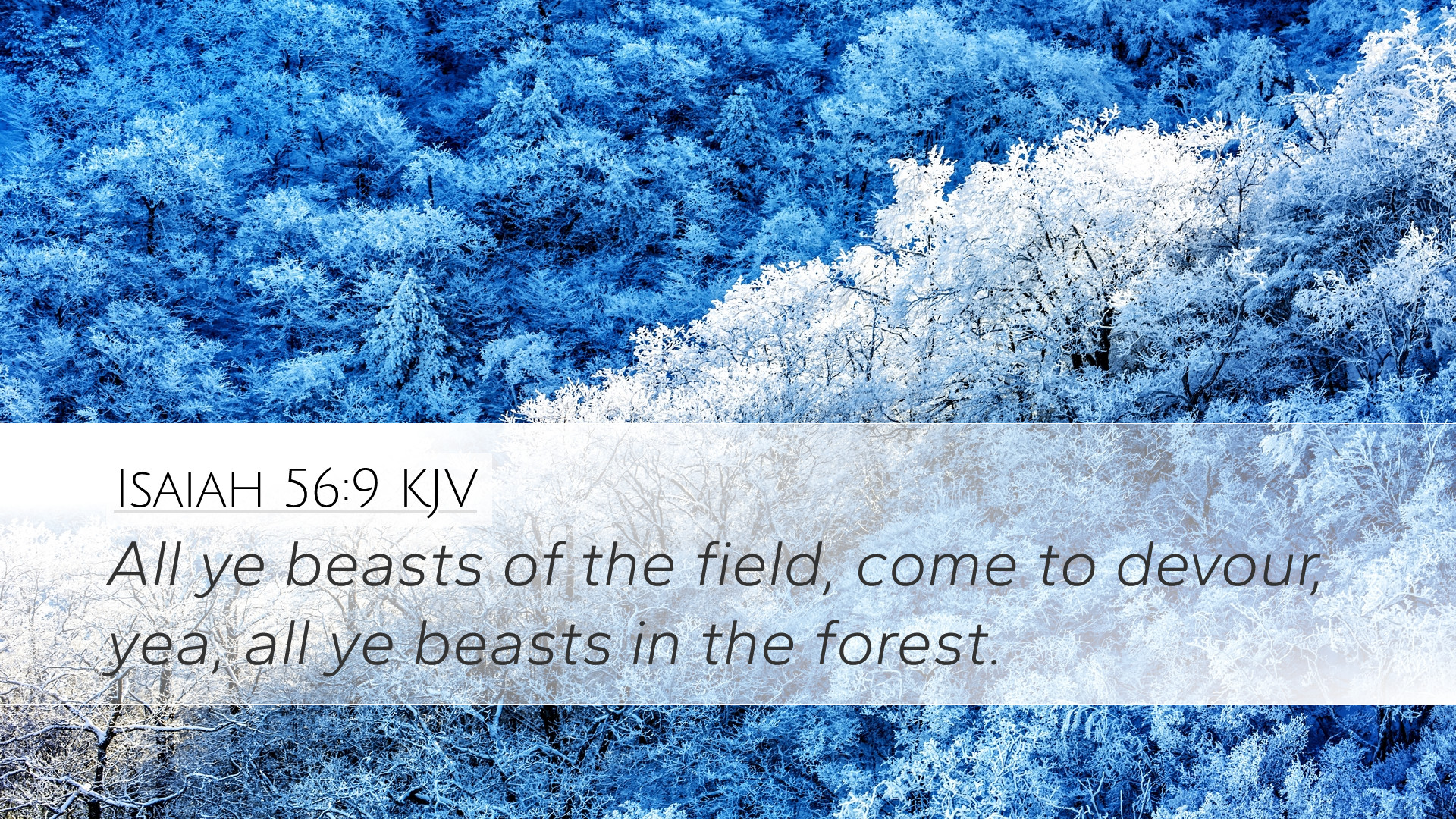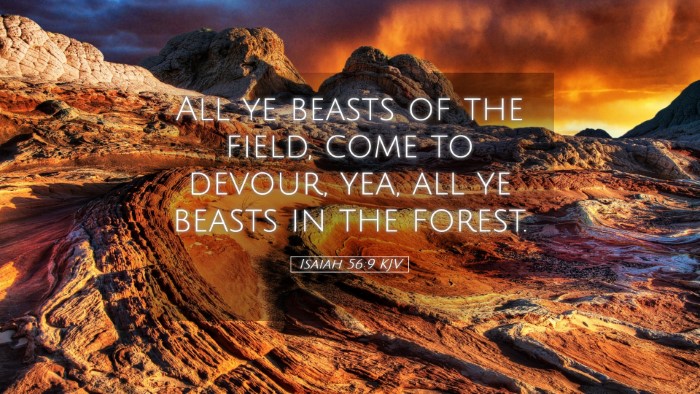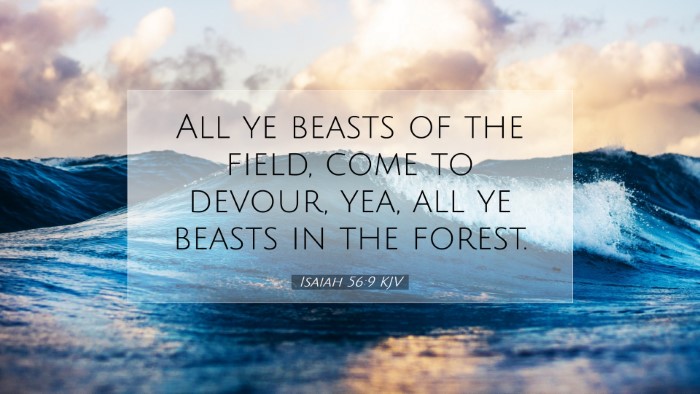Commentary on Isaiah 56:9
This verse reads: "All ye beasts of the field, come to devour, yea, all ye beasts in the forest." It serves as a vivid representation of the spiritual state of Israel and the call for reflection on the consequences of their actions.
Contextual Background
In Isaiah 56, the prophet addresses a post-exilic community grappling with their identity and relationship with God. After the Babylonian exile, the Jewish people faced challenges of faithfulness amidst foreign influence. Isaiah's prophetic words beckon them toward restoration and covenant faithfulness.
The Call to Beasts - Symbolism and Implications
Isaiah's call to the "beasts of the field" has been interpreted in various ways:
- Metaphorical Inviting: The beasts can symbolize nations and peoples who would partake in the judgment of God upon Judah due to their disobedience (Matthew Henry).
- Judgment Imagery: The verse reflects a desolation where beasts thrive in a place that once was inhabited by vibrant life, indicating a profound spiritual and moral decay (Albert Barnes).
- Exhortation of Warning: This summons serves as a warning to Israel; if they continue in their waywardness, they will invite destruction upon themselves (Adam Clarke).
Theological Insights
Theologically, this verse underscores several critical reflections:
- Consequences of Sin: Just as beasts come to devour, sin inevitably leads to judgment, showing the results of turning one’s back on God. The imagery serves as an open warning to maintain faithfulness (Matthew Henry).
- The Sovereignty of God: Despite the bleakness of Israel's situation, God's sovereignty remains intact. Even the beasts serve His purpose—illustrating God's control over all creation (Albert Barnes).
- Hope Amid Desolation: There exists hope within the context of lament. While the judgment may come with desolation, restoration follows for those who turn back to God (Adam Clarke).
Practical Applications for Today
For pastors, students, theologians, and Bible scholars, this passage holds valuable lessons:
- Awareness of Spiritual Condition: Just as Isaiah calls attention to a physical threat from beasts, believers today are encouraged to evaluate their spiritual conditions and the implications of their sin (Matthew Henry).
- The Call for Repentance: The imagery urges a proactive approach in calling upon one's congregation to recognize the seriousness of straying from God’s ways, emphasizing the need for repentance (Albert Barnes).
- Understanding God’s Judgment: This verse teaches about the nature of God’s judgment—not as a mere act of punishment, but as the natural outcome of the separation that occurs through sin (Adam Clarke).
- Hope in Restoration: There is an underlying message of hope that resonates throughout Scripture; no matter how far one strays, the possibility of restoration through repentance and faith remains (Collective Insights).
Conclusion
Isaiah 56:9 stands as a poignant reminder of the consequences of hardness of heart and the call to introspection and realignment with God’s covenant. For the faithful, it serves as an encouragement to continue seeking God with all their heart, soul, and mind. It invites us to reflect deeply on our spiritual states, the nature of God’s impending judgment, and the sufficient grace that calls us to return.


